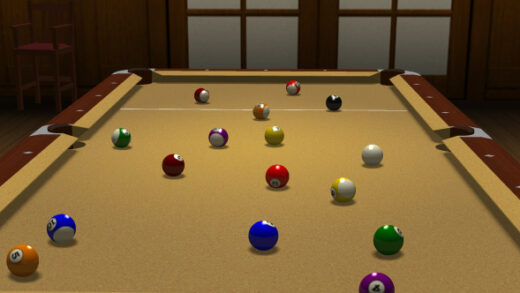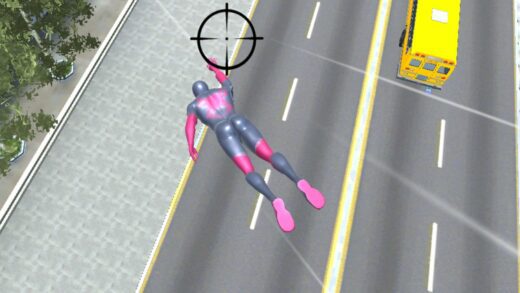Enter the exciting universe of the 31 card game. Known by various names like Scat, Blitz, or Ride the Bus, this game is all about adding up your cards to reach 31 points. You can use cards from one suit or mix them up, and there are different rules in different places, which adds to the excitement whether you’re a seasoned card player or just starting out. The rules of the 31 card game are also essential for mastering it. 31 card game is a fantastic way to enjoy some fun moments and challenge your friends. Get ready for a mix of strategy and luck in this classic game.
31 Card Game History
Let’s explore 31 card game, a really old card game that goes way back to the 1440s. Back then, it was a game gentlemen liked to play for a bit of gambling fun. It’s interesting because it was mentioned in a sermon by Bernadine of Sienne, who didn’t really like gambling. People who know a lot about games also think Thirty-One is like the grandparent of other famous games such as Blackjack and Cribbage. So, it’s like a cool piece of history in the card game world.
What exactly is the 31 card game?
Let’s delve into the 31 card game, also recognized as “Scat.” This game is all about trying to make your hand of cards add up to about 31 points. It might sound simple, but you need to be cautious not to be too greedy and end up with the lowest score, or you’ll lose one of your lives.
Objective
In each round, you aim to avoid having the lowest score in your 3-card hand to keep all your lives.
Winning the Game
The main goal is to be the last person remaining in the game.
What You Need
All you require is a standard deck of 52 cards. For younger players, consider using special card holders and entertaining decks like Pokemon or Minecraft. Each player gets three markers, such as poker chips, to represent their lives.
Number of Players
You can play the 31 card game with two or more people.
Who Can Play
Everyone aged five and above can enjoy this game, making it particularly beneficial for kindergarten and first-grade kids as it helps them practice math skills.
Skills You’ll Develop
- Adding Numbers: Improve your ability to add numbers from 1 to 31, with a focus on 1 to 10.
- Matching Symbols: Enjoy the fun of matching suits and numbers.
- Understanding Place Value: Get the hang of basic place value, especially with the number 10.
- Thinking Ahead: Learn to think about the outcomes of your decisions in the game.
- Using Strategy: Every move in the game requires some thinking – like choosing which card to pick and when to declare you’re done.
- Remembering Cards: Improve your chances of winning by remembering which cards have been played.
- Getting Along: Like other games, 31 helps you practice taking turns, following rules, and getting along with others.
So, get ready for a good time with the 31 card game. It’s a blend of numbers, strategy, and fun that everyone can enjoy.
Why Kids Like It
Kids like this game because it’s easy to understand for those 5 and older. Plus, it’s not just for kids – everyone can have fun because it involves some thinking. We think it’s a great game because, besides helping kids with math (especially those 5-7 years old), it also helps them get better at different things, as we discussed before. So, it’s a fun game that helps you learn.
How To Play The 31 Card Game Rules
1: Get a regular deck of cards and gather at least two players
For game 31, you need a normal deck of playing cards and at least two people to play. It’s good to play with 2 to 4 players.
2: Choose a dealer
You’ll play many rounds, so who goes first doesn’t matter. Let each player draw a card, and the one with the highest card becomes the dealer. Or you can decide with rock-paper-scissors or pick the youngest or oldest player.
3: Set up the game by dealing three cards face down to each player and giving out three lives
At the beginning, each player gets three “lives,” which you can show with markers like poker chips. Everyone also gets three cards but keeps them secret from the others.
4: Form the remaining cards face down to create a stockpile and reveal the top card to establish the discard pile.
Put the rest of the cards face down in the middle to make the “stockpile.” Turn the top card face up to create the “discard pile.” Now you’re ready to play.
5: Start the first turn of the game
The game begins with the player to the left of the dealer. Here’s what that player does during their turn.
5A: Check the cards. Players want to get close to 31 points.
Here’s how the cards are scored:
Card values:
- 2-10: Their number is their score.
- Face cards (J, Q, K): Each is worth 10 points.
- Ace: It counts as 11 points.
Hand values:
- You can only add cards of the same suit.
- Except for a 3-of-a-kind (three of the same number), which is worth 30 points.
For example, a perfect hand is two face cards and an Ace of the same suit (10 + 10 + 11 = 31). A good hand is three of a kind, but if only 2 cards match, only one counts (e.g., 5, 5, 3 would score 5 points).
5B: Plan your moves
Players want to improve their cards to get close to 31. However, the main goal is to avoid having the lowest score. They also think about ending the game early if they think they’re doing better than at least one other player.
5C: Decide what to do. Players have three choices:
- Draw from the discard pile: If the top card there will help, take it and replace it with one of your cards. Then, it’s the next player’s turn.
- Draw from the stockpile: If you think any card from the top of the deck will help, take it and then replace it with one of your cards. Then it’s the next player’s turn.
- Knock: If you’re sure your cards aren’t the worst, knock instead of taking a card. This lets everyone else have one more turn to improve their cards. After that, everyone shows their cards, and the player with the lowest score loses a life.
Remember: If anyone has a 31, they say it right away, the round ends, and everyone loses a life.
6: Keep taking turns in the game
The game keeps moving around the players in a circle (or back and forth if only two players exist). Each player has the same three choices we talked about earlier (pick a card from the discard pile, pick one from the deck, or knock) during their turn.
7: Keep playing until someone knocks or a player gets exactly 31
The game goes on until a player decides to knock, or if any player manages to get exactly 31 points in their hand. If someone reaches 31, they should say it right away. In this case, other players won’t get another turn, and everyone loses one of their lives.
More often, a player who feels good about their cards (thinking they’re not the worst) will knock during their turn, signalling the end of the round without picking more cards.
8: Give everyone one more turn who didn’t knock
When someone decides to knock, all the other players get one more turn to make their cards better. They take turns going in a circle, but the player who knocked doesn’t take another turn.
9: Show the cards and find the round’s loser, who takes away one marker
The player with the fewest points loses the round and has to take away one of their markers, which shows they lost a chance to win.
If the player who knocked has the lowest score, they take away two markers.
If some players tie for the lowest score:
- If players don’t tie with each other, they each take away a marker.
- If the player who knocked ties with another player for the lowest score, the one who knocked doesn’t remove a marker. But any other players who tied take away a marker.
10: Play another round and do the same until only one player wins
Keep playing more rounds until there’s only one player left. Players stay in the game even after losing three chances and having no markers left. But if they lose a round without any markers, they’re out of the game. The last player standing is the winner.
31 Card Game Video Guide
31 Card Game Rules
Let’s talk about 31 Card Game Rules. Cards with numbers 2 to 10 are worth the number on the card. Face cards (like Jack, Queen, and King) are all worth 10, and Aces are worth 11. When you’re adding up points for your hand, you can only use cards of the same suit, except when you have three of a kind worth 30 points.
Now, if you manage to get exactly 31 points, the game ends right there, and everyone else loses a life. But if you’re the one who knocks and you have the lowest score, you lose two lives. If you tie with someone else for the lowest score when you knock, you don’t lose a life, but the other person does. And if two players tie with low scores and neither of them is knocked, they both lose a life.
During your turn, you can choose to pick cards from the discard pile or from the stockpile. After someone knocks, everyone gets one more turn to try and improve their hand.
Variations in the 31 Card Game
Tackling Ties
When it comes to ties in the game, the usual way is that if both players without a knock have low scores, they both lose a life. In cases where there’s a tie between a player who knocked and one who didn’t, only the player who didn’t knock loses a life.
But here’s another way some people handle ties: they look at the cards differently. They use the highest card as the first tiebreaker and the second-highest card as the next tiebreaker.
For example, if two hands both add up to 18 points, like Player 1 (10, 5, 3) and Player 2 (8, 7, 3), Player 2 loses because Player 1 has a higher single highest-ranked card (10) compared to Player 2’s highest-ranked card (8). In another situation with Player 1 (10, 5, 3) and Player 2 (10, 6, 2), Player 1 would lose because the 10s tie and the second-highest rank of Player 1 (5) is lower than the second-highest rank of Player 2 (6).
Casino Twist: Exploring 31 Card Game in Casinos
When you’re in a casino, the 31-card game takes on different forms, much like the game of blackjack, where you’re usually playing against the dealer. It might go by names like “Money Suit 31” or have other variations. Even though it keeps some basic ideas, like suited cards scoring together, playing it in a casino is a bit different. You won’t be making decisions about drawing cards from a discard pile or stockpile, and the main goal changes from avoiding the lowest score to trying to beat the dealer by just one point, similar to how you play blackjack.
Tips for Beginners: Getting the Hang of the 31 Card Game
If you’re just starting with the 31 card game, it’s easy to get caught up in trying to hit that magical 31. But the real trick is to avoid ending up with the lowest score in a round.
Knock Early if You Have a Good Hand
Instead of stressing about getting close to 31, think about steering clear of the lowest hand. If you’ve got a strong hand early on, like two face cards of the same suit and one other card totalling 20, it might be smart to knock early. This move can give you a good advantage.
Keep Playing if Your Hand Isn’t Great
On the flip side, if your hand doesn’t look impressive early on, don’t be in a rush to knock. Keep playing and aim to improve your hand as the game progresses.
Don’t Chase 3-of-a-Kinds
Getting three cards of the same rank is worth 30 points, but it’s a bit risky. Chasing a 3-of-a-kind, especially if you start with a pair, can leave you with just a single card score. Be cautious, especially if you’re dealt a pair of cards initially.
Play Two Ways
Playing it two ways means you’re holding a pair and a suited card matching one of your paired cards. For instance, having a 7 of clubs, a 7 of spades, and a Jack of Spades gives you an immediate score of 17 with the potential of reaching 30. Adjust your strategy if a third matching suit becomes available.
Watch the Discarded Cards
The cards in the discard pile can tell you a lot about which suits are likely still in the deck. If hearts and diamonds are being discarded a lot, there’s a better chance of drawing a spade or club.
See What Others Pick from the Discard Pile
Take notice of what other players choose from the discard pile. If they go for a low card, they’re probably aiming for cards in that suit, possibly the third card.
Check Out What Players Discard
You can learn from what other players throw away. If someone discards an 8 of hearts, they’re not going for eights, and probably not hearts either. Pay attention to these clues.
Be Smart About Your Discards
Think about what you’ve learned from the player sitting next to you. If they picked up a 5 of spades, avoid discarding a higher spade that could help them. If they’ve discarded the 8 of hearts, feel free to discard any heart; the eight might not be useful for them. Choose your discards wisely based on these observations.
Recommendation
How To Play Bunco: A Step By Step Guide
How To Play 4 Corners Game: A Complete Guide
What Is Retro Bowl QB Mode And How To Play It?
How To Get Rid Of Ants In Virtual Families 3
Classroom 6x: The Ultimate Guide
Ransom Notes: The Ridiculous Word Magnet Game
Conclusion
In conclusion, the 31 card game offers an exhilarating journey into the world of cards, known by various monikers like Scat, Blitz, or Ride the Bus. Whether you’re a seasoned player or a novice, the game’s charm lies in the diverse rules and strategies, providing excitement for all. The essential rules of the 31 card game serve as a guide to mastering this classic, offering a delightful way to spend enjoyable moments with friends. Embrace the blend of strategy and luck in this timeless game that transcends age, providing a fun and engaging experience for everyone involved.
FAQs
Q: What happens if you knock in 31 and lose?
A: If you decide to knock and end up with the lowest hand, leading to a loss, you’ll be required to pay two pennies (if you have that number). When a player declares 31, every other player must contribute a penny to the kitty. If a 31 is declared following another player’s knock, the original knocker only pays one penny, similar to all other participants.
Q: What is the card game closest to 31?
A: Blitz (2-12 players) – A popular and relaxed card game, also known as “Scat,” “Thirty-One,” “Ride the Bus,” and “Blitz.” The objective is to enhance your three-card hand by drawing and discarding a card each turn, aiming to achieve the closest possible total to 31 points within a single suit.
Q: Who invented the 31 card game?
A: Thirty-one, or Trente et al., is a betting card game crafted by Todd Moyle for two to seven participants. In this game, players strive to create a hand that sums up to a total of 31.
Q: Do you get the last card if you hit 31?
A: Players are required to play a card when possible, making sure not to surpass 31. If the exact sum of 31 is reached, the last player to play a card earns two points (“31 for two”). If the total is different, such as 29 or 30, the player receives one point (“29 for one,” “30 for one,” etc.). This singular point score is commonly referred to as “One for go” or simply “Go.”
Q: What are three aces worth in 31?
A: The numerical cards ranging from 2 to 10 hold values equivalent to their respective numbers, while face cards carry a value of 10, and aces are valued at 11. The total points for a hand are determined by combining cards of the same suit, with the exception of 3-of-a-kind, which maintains a fixed value of 30 points.



